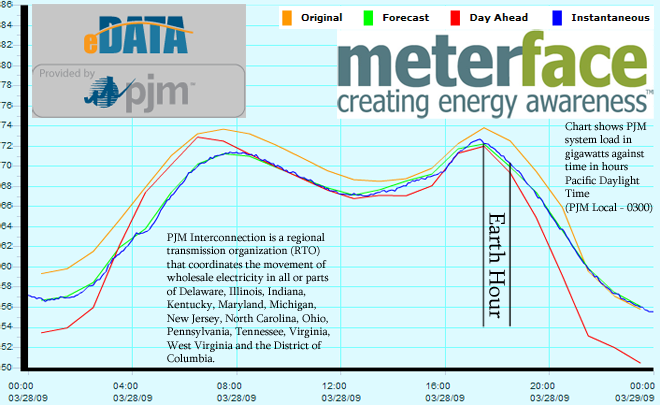The conventional thinking in smart grid and advanced metering infrastructure (AMI) circles envisions a two-way communications network between utilities and consumers carrying energy consumption, dynamic pricing, and load shed signals between consumers' smart meters and utilities' central control systems. Unfortunately for rural energy consumers, including many of America's farmers and ranchers, this vision will not become reality for a long, long while. Where neither WiMAX nor traditional cellular data networks provide wireless data coverage, no affordable, technically feasible, real-time, two-way data communication link alternative exists (that is, without commandeering the consumer's phone line). Without a real-time two-way link, smart metering, as currently envisioned, cannot be deployed to rural America.
In Boulder, America's first "smart grid" city, Xcel Energy has made a substantial investment not just in new smart meters, but also in the costly broadband infrastructure necessary to read them:
Minneapolis-based Xcel, Colorado's largest electric utility, has installed about 14,000 "smart" meters that provide information to the utility and to customers. Xcel and its contractors have strung more than 100 miles of [fiber-optic] cable over power lines for broadband transmission and hooked up a handful of homes to program and monitor energy use.
You can see a map of Xcel Energy's Boulder urban Smart Grid here.It may not be obvious, but the only immediate way to economically justify a fiber-optic backbone deployment of the type Xcel is using in Boulder (beyond R&D) is to re-use that same fiber backbone to compete with incumbent DSL and Cable operators (e.g. Qwest and Comcast) in the commodity-grade residential broadband marketplace. That's a messy prospect with all sorts of political favoritism and anti-trust implications, especially with money in the
ARRA (a.k.a. the Federal Stimulus Bill) specifically earmarked for broadband deployment. Giving both smart grid and broadband funds, amounting to some billions of dollars (see footnote), directly to utility companies is just too much concentration of monopoly power for most Americans to feel comfortable. As a result, I think it's unlikely that rural utilities will get federal funding for both smart grid trials and broadband programs.
As an alternative to an expensive fiber-optic rural grid overlay, rural utilities could potentially turn to the two-way capabilities of third-party wireless data networks like SMS, GPRS, CDMA, or WiMAX. (Another alternative, broadband-over-powerline (BPL), is too expensive for rural grids.) Smart meters are already being designed to use these technologies, and big names like
GE and Intel are backing them. However, each of these technologies faces problems that make them unsuitable for rural deployment. I believe that WiMAX is too expensive for the coverage area required by rural deployments. GSM, GPRS, CDMA Data, or SMS coverage may be available in some rural areas, but a quick glance at the
AT&T Wireless and
Sprint Nextel coverage maps quickly shows that many rural areas lack basic cellular data services. Filling in these gaps would be both costly and unprofitable; that's why it hasn't been done yet. Consumers in areas without cellular coverage would similarly be without the benefit of smart grid electricity, resulting in less efficient usage of electricity there and higher over-all energy costs.
Smart metering and demand response systems will reduce costs for urban utilities and urban consumers through efficient load management. Using dynamic pricing and demand response capabilities, they will be able to avoid buying excessive amounts of bulk power at high prices during peak demand periods. Meanwhile, rural electric cooperatives will still be forced to buy bulk electricity at market rates, even when critical peak pricing is in effect. Rural power consumers will pay more and will lack the tools to change the situation. Eventually, while urban air conditioners, pool pumps, and car chargers are automatically cycling off during peak pricing periods, rural utilities may be forced to implement rolling blackouts in order to be able to break even on operating costs while maintaining regulated energy pricing structures.
This rural-urban disparity can be resolved through better solution architecture of smart grid systems. At the most basic level, demand response and dynamic pricing can be implemented without real-time two-way communication between the utility and the consumer. Consumption data can be stored at the consumer's location, in a smart meter, home automation controller, or personal computer system, and
periodically forwarded to the utility using mobile or even handheld automated meter reading (AMR) technologies. More frequent, but less trustworthy, complementary updates can be sent by the consumer's in-home energy monitoring system via dial-up Internet access, satellite broadband, or other available consumer-controlled IP broadband technology. This store-and-forward approach eliminates the need for real-time two-way data communications while still providing the benefits of sophisticated time-of-use (TOU) pricing schedules.
Rural consumers can receive dynamic pricing information a number of ways, whether it be over a one-way paging network or through traditional AM broadcast radio (e.g. a rural radio announcer reads "the price for April pork bellies on the Chicago Mercantile Exchange is up five dollars to $80.56 today, meanwhile the Lake Wobegotten Rural Power Co-op will charge 28 cents per kilowatt-hour, triple the normal rate, for residential and farm electricity from 4:00 p.m. to 6:00 p.m. today due to excessive forecasted demand on the wholesale market." This may seem a rudimentary solution, but this is the kind of no-nonsense, keep-it-short-and-simple (KISS) approach to distribution of real-time market information that consumers take meaningful action on every day. Let's empower rural energy consumers with the information and infrastructure necessary to make smart energy choices, not through uneconomic technology, but through least-cost solutions that implement dynamic energy pricing and charging in ways that will work for everyone.
Footnote:The
ARRA allocates $2.5 billion to rural broadband deployment through the Distance Learning, Telemedicine, and Broadband Program of the Rural Utilities Servoce; $4.7 billion to broadband deployment through the "Broadband Technology Opportunities Program"; and a 50% federal funding match for qualifying smart grid demonstration projects through amendments to the Energy Independence and Security Act of 2007.


